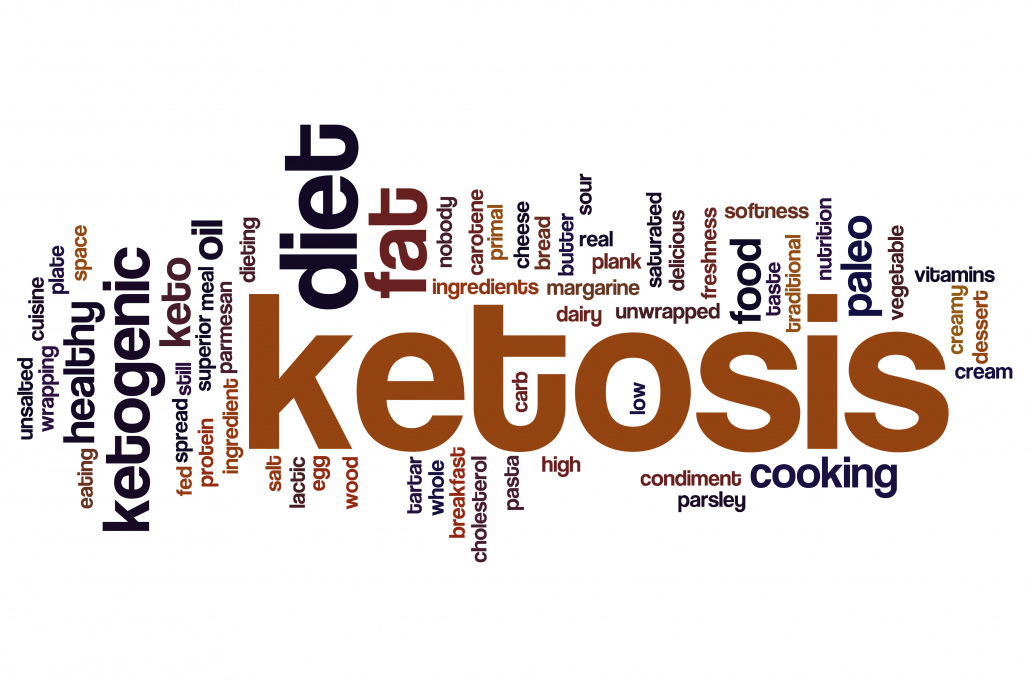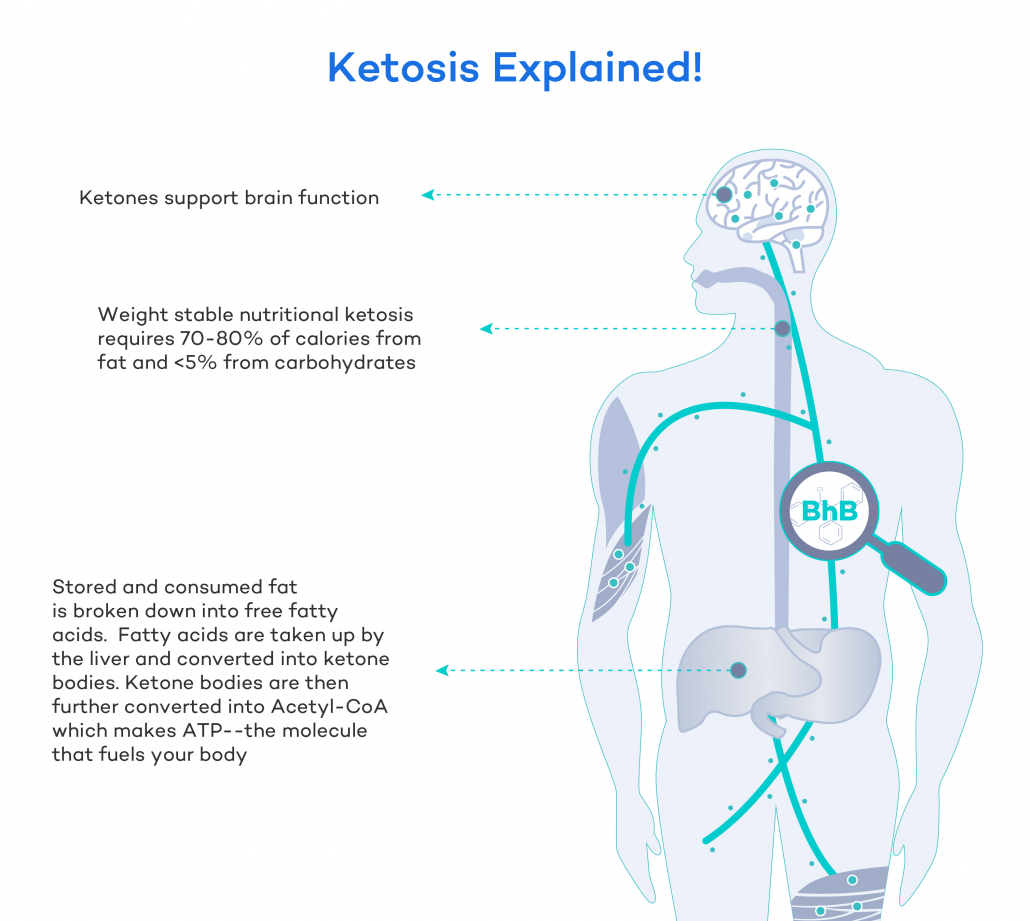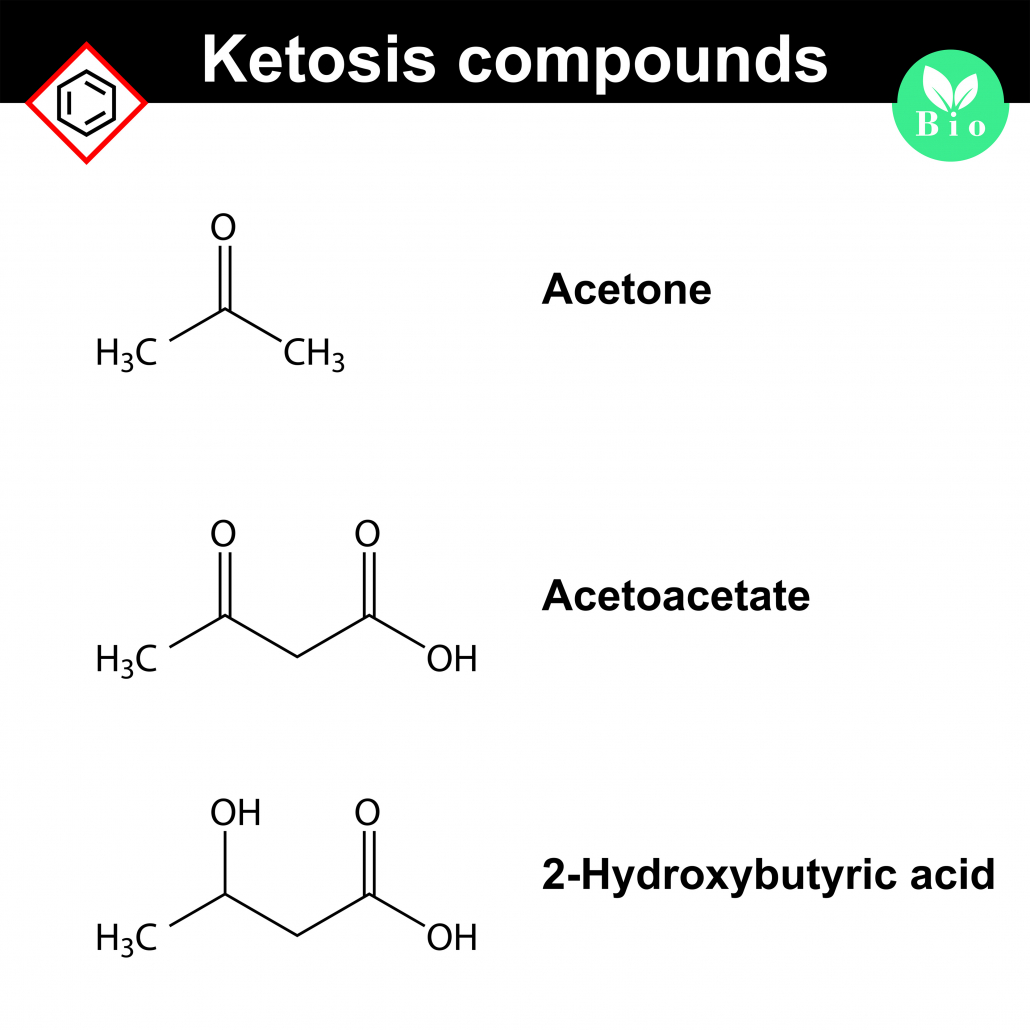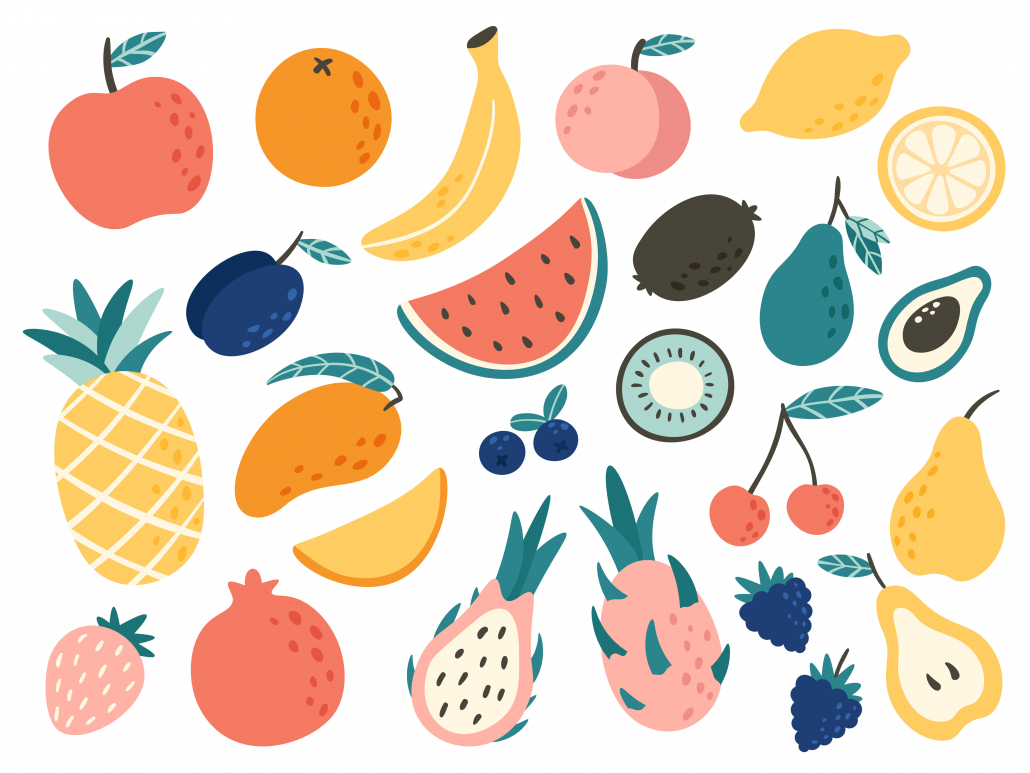We include products in articles we think are useful for our readers. If you buy products or services through links on our website, we may earn a small commission.
Ketosis Explained: What It Is, Benefits, And How To Achieve It

Table of Contents
If you’ve heard about the ketogenic (keto) diet, you’ve probably come across the word “ketosis” and wondered what it means.
In this article we’ll dive deep into ketosis, exploring what it is, while offering tips for how to safely achieve and maintain ketosis.
What is Ketosis?
From a scientific perspective, ketosis is a metabolic state defined by a high level of molecules called ketone bodies in your urine.
Our bodies use these molecules to fuel our cells in the absence of sufficient blood sugar (glucose), and when the sugar (glycogen) stored in your liver and muscles has been depleted.
How Do We Get into Ketosis?
We get into ketosis by restricting carbs to less than 50 grams per day, and by fasting.
Carb restriction and fasting triggers our bodies to switch from using glucose, to using ketones to fuel our cells.
It works like this: Our bodies have two sources from which they can provide energy to our cells:
- Sugar (glucose) that we get from the carbohydrates we eat, the glycogen we store in our liver and muscles, and from the breakdown of protein.
- Fats, stored as fatty acids on our bodies, and from the fat we eat.
Though our bodies prioritize carbs, the ability of the bodies to store carbohydrates is limited. We only have about a teaspoon of glucose in our blood at any time. Blood sugar, along with the small amounts of glycogen in our muscles and liver gets depleted in a day or two. Once depleted, blood sugar and insulin levels plummet.
Though our liver will continue to synthesize some glucose out of amino acids from proteins through a process called gluconeogenesis, it’s not enough to keep us alive.
That’s when our bodies start breaking down our most robust energy stores–the fat on our bodies.
Ever wonder why most of us have a tendency to carry around a spare tire or a plump behind? These physical features are the human version of the humps on a camel’s back, which, surprise, aren’t filled with water, but with fat!
This process where the body breaks down fats into ketone bodies is called ketogenesis. These newly released fatty acids flow into the bloodstream and accumulate. The metabolic state when ketogenesis is providing the primary fuel source is called ketosis.

What are Ketone Bodies?
Ketone bodies are energy molecules produced in the liver from the breakdown of fatty acids. Many people use the terms “ketones” and “ketone bodies” interchangeably. However, while all ketone bodies are ketones, not all ketones are ketone bodies. The ketones (or ketone bodies) produced in the body are:
- Acetoacetate
- Beta-hydroxybutyrate (BHB)
- Acetone
All three types can be used as energy sources.
| Glucose (Carb) Energy | 3-Hydroxybutyrate Ketone (Fat) |
| 8.7 kg of ATP per 100g | 10.5 kg ATP per 100g |

Getting into ketosis is totally normal and natural. In fact, it’s a state that humans evolved to easily enter during the 2 million years when our ancestors ate a hyper-carnivorous diet. Why do we Enter Ketosis: Evolutionary Origins
Very long story short, for most of human history humans hunted and ate large animals. There used to be a whole lot more of them roaming around like wooly mammoths and even 2000lb chinchillas.
But hunting is hard, and during lean periods when our ancestors either couldn’t find these animals or failed at their hunt, their bodies needed a way to stay fueled. That’s where ketosis comes in.
Eating large animals with lots of fat in combination with having to endure fasting periods where they didn’t eat much at all, selected for the body’s ability to use stored fat, and fat from food for fuel.
Ketosis in Modernity
We modern humans have very different eating habits than our stone-age ancestors. When’s the last time you got 100% of your daily calories from fresh mastodon liver?
Instead of fatty meats, eating a standard American or Western diet means consuming a constant stream of high-carb foods. Eating habits like these make it impossible to enter ketosis without dramatic dietary changes.
These changes include either, or a combination of, fasting and restricting carbohydrates.
Signs That You Are in Ketosis
When fasting and restricting carbs, you are officially in ketosis if your blood ketone level is 0.5 mmol/L or higher. But if your goal is to use ketosis to lose weight, reduce inflammation, kick your carb addiction, and improve your overall health, for most people it’s not necessary to routinely check your ketone levels.
Instead, simply pay attention to these signs to see if you’re on the right track:
- “Keto breath”
- Increased thirst and frequent urination
- Initial fatigue, followed by increased focus and energy
- Reduced appetite and food intake
- Short-term decreases in performance
- Rapid weight loss
- Increased ketones in the blood
- Increased mental clarity
- Absence of sugar cravings
“Keto Breath”
Unlike your high school math teacher’s bad breath, keto breath is at least somewhat desirable.
Many people describe keto breath as smelling fruity or like nail polish remover. It can also taste metallic or fruity, or both.
Though your body produces small amounts of ketones even when you’re not in ketosis, when you make the switch to a keto diet, your liver can sometimes produce too many ketones. When there is an excessive amount of ketones, they are released through your breath or urine.
Acetone is an ingredient in nail polish remover, so “nail polish breath” makes sense.
Tips to Overcome Keto Breath
To overcome keto breath, try the following:
- Drink lots of water: When you first go into ketosis, your body releases lots of fluids, so it’s easy to become dehydrated. Besides rehydration, water can wash away the ketones on your breath. So increase your water intake, but don’t forget to replenish your electrolytes as well.
- Check your protein intake: When your body breaks down proteins, it naturally produces ammonia. Having too much protein in your diet can lead to the overproduction of ammonia. Like acetone, ammonia gets released through your urine and breath. Try to stick to the recommended 15% to 30% calories from protein.
Some people may never experience keto breath. And if you’re hesitating to start the keto diet because you don’t want keto breath, don’t worry — it’s temporary. After a few days, to a few weeks, as you become keto-adapted you’ll stop producing excess ketones.
Measuring Ketones
If you’re satiated, losing weight, and urinating a lot, you’re probably transitioning into ketosis. But if you want confirmation, there are a few ways to measure your ketones.
- Urine strips: The simplest and cheapest way to measure ketone levels. When a strip is dipped in urine, the degree of color change will show whether you’re in ketosis. Unfortunately, this method is not very reliable. They might be useful at the beginning of your keto diet journey. Long-term keto dieters may see a lower amount since their bodies are used to creating and using a balance of ketones.
- Breath-ketone analyzers: When you breathe into a breath-ketone analyzer, it gives you the approximate number of ketones in your breath. Though more accurate than urine strips, breath-ketone analyzers are also more expensive and only measure acetone levels.
- Blood-ketone testing: This is the most accurate and reliable method of measuring ketosis. The downside of blood-ketone meters is that they require pricking the finger to draw blood. They can also be quite expensive.
Benefits of Ketosis
There are numerous benefits to ketosis. The ketone BHB, in particular, has been found to possess a range of signaling functions that have powerful therapeutic effects against metabolic diseases.
Let’s look at some of the other benefits of ketosis.
Reversal of Insulin Resistance
Insulin is a hormone that regulates the metabolism of fats and carbohydrates. When you eat a meal, blood glucose levels increase. The pancreas responds by releasing insulin into the blood, which allows fat, liver, and muscle cells to absorb the glucose. This process reduces blood glucose levels.
Unfortunately, when people eat a constant stream of high-carbs (all carbs are broken down into sugar), the body stops responding to insulin. This inhibits the absorption of glucose from the bloodstream into fat, liver, and muscle cells. Blood sugar remains elevated, and to compensate, the pancreas is forced to produce more and more insulin.
This continuous overproduction of insulin is incredibly taxing on the pancreas. Eventually the pancreas “burns out” and can no longer produce enough insulin to keep blood sugar in check. Uncontrolled high blood glucose levels can lead to diabetes, prediabetes, fatty liver disease, and other metabolic health conditions.
Being in ketosis can reverse this process by cutting out the root cause of insulin resistance–the carbs in our diet.
In one study, patients with type 2 diabetes consumed a high-fat keto diet for 2 weeks. Researchers noted a whopping 75% improvement in the patients’ insulin sensitivity.
Another study sought to compare the effects of a keto diet and a low-fat diet on insulin resistance. Although patients in both groups had favorable changes in body weight and triglyceride levels, the keto diet group had more pronounced changes. This group also had lower serum retinol binding protein 4 levels, which has been linked to insulin resistance.
Perhaps the most dramatic reversal came in a 2011 pilot study looking at the effectiveness of the Mediterranean keto diet for obese men. After 12 weeks the metabolic disease (of which insulin resistance is a key factor) in all participants was completely cured.
Reversal of Diabetes and Prediabetes
Improved insulin sensitivity is welcome news for people with type 2 diabetes and prediabetes.
A recent study looking at the role of ketone bodies in metabolic regulation found that BHB functions as a stress response molecule and helps maintain homeostasis through its antioxidant activities. This function may reduce and reverses metabolic diseases including type 2 diabetes.
Ketosis has also been shown to reduce blood glucose, improve insulin sensitivity, and reduce inflammation.
Since these are all hallmarks of type 2 diabetes and prediabetes, nutritional ketosis can be a highly effective method for reversing these conditions.
Increased Focus and Energy
When starting a keto diet, some people report experiencing brain fog and feeling tired. This is because 20% of your brain cells rely on glucose, yet the brain doesn’t store much glycogen — only about 5-minutes’ worth of normal function.
Interestingly, this lack of glycogen, coupled with our ability to rapidly enter ketosis, is viewed as evidence that humans evolved to eat a diet high in fat.3 For modern humans not adapted to keto, rapid drops in blood glucose levels can cause cognitive performance decline, confusion, and in severe cases, coma.
But when you are in ketosis, ketone bodies can cross the blood-brain barrier and provide potent energy to your brain.[10 In one animal study, young and old rats fed a keto diet displayed higher cognitive performance than those fed a normal diet.
Available data also suggests that ketosis may be beneficial for people with neurological disorders, including Alzheimer’s disease, traumatic brain injury, Parkinson’s disease, and concussions.
It should come as no surprise, then, that long-term keto dieters often experience improved focus, memory, and mood.
Rapid Weight Loss
One of the first things many keto dieters notice when they’re in ketosis is rapid weight loss. Though some of this is water weight that’s shed as your body burns through glycogen stores. much of it is fat that your body breaks down into fuel.
Appetite Suppression
When in ketosis, ketones can also suppress appetite, causing us to eat fewer calories. In particular, BHB and acetoacetate can lower your body’s hunger hormone, ghrelin. As long as ketosis is maintained, ghrelin levels appear to remain stable.
On the other hand, high-carb foods stimulate appetite. Insulin spikes and drops can lead to cravings for more carbs.
Certain carbohydrates can also limit weight loss. High-carb diets can increase fat deposition in your body and reduce levels of metabolic fuels (glucose and lipids). This results in increased hunger and slower metabolism.
Despite losing weight, many people on a keto diet report feeling less hungry and having a reduced desire to eat.
Reduces Seizures
The keto diet may have experienced a renaissance in recent years, but it’s been used medically for about 100 years to treat drug-resistant epilepsy.
Though researchers are still trying to determine why and how the keto diet is so effective, some believe that its influence in rebalancing gut microbiota may play a role.
Ketosis Side Effects
Though safe and beneficial, the transition into ketosis can come with some uncomfortable side effects. Taken together these symptoms like fatigue, headaches, dizziness, nausea, and sugar cravings are often called the “keto flu.”
These symptoms can last a few hours to a couple of weeks as you become keto-adapted. The good news is that they’re temporary, and there are ways to avoid them or drastically reduce their severity.
Technique for alleviating keto flu include:
- Staying hydrated: Always drink when you’re thirsty but try to sip water throughout the day so you can avoid dehydration.
- Replenish electrolytes: When you lose water weight, you also lose electrolytes. You can replenish them by increasing your intake of sodium, magnesium, potassium, and calcium. Taking an electrolyte supplement can help.
- Avoid strenuous exercise: You may not feel like exercising much while your body adapts to new fuel sources, but light activities like yoga and walking can improve symptoms.
- Get plenty of sleep: Treat yourself to more rest and sleep during your transition. Fatigue and irritability can increase your stress level, making your symptoms worse.
- Get enough fat: Since you’re cutting most carbs from your diet, you’ll need to make sure you’re getting the same amount of calories from keto-friendly fats.
Ketosis is Not Ketoacidosis
Despite the similarity in their names, ketosis and ketoacidosis are not the same.
Ketosis is a normal metabolic process with numerous benefits. On the other hand, ketoacidosis is a life-threatening condition that mainly affects people with diabetes.
Diabetic ketoacidosis occurs when insulin levels are so low that it can’t drive glucose into cells to be used as a fuel source. If glucose can’t get into cells, it builds up in the blood, resulting in toxically high blood sugar levels.
When your cells don’t get enough glucose, they begin to break down fat for energy, creating ketones. In ketoacidosis, this process happens too rapidly for the body to handle. When ketones build up in the blood, they disturb the acid-base balance, making it dangerously acidic.
Diabetic ketoacidosis usually requires hospitalization to lower blood sugar safely with intravenous fluids and insulin.
Ketoacidosis can happen to anyone with diabetes. However, it is much more common and more severe in people with type 1 diabetes. It can also occur in individuals with chronic alcohol abuse (alcoholic ketoacidosis) or those with eating disorders (starvation ketoacidosis).
Optimal Ketosis
Now that you know more about ketosis, you may be wondering: what is the optimal ketone level?
The answer depends on what your goals are. The ketone levels for someone who wants to lose weight might be different from those who wants to treat an illness. The numbers may also depend on whether you have diabetes.
When discussing ketone levels, people often cite the book The Art and Science of Low Carbohydrate Living by Drs. Stephen Phinney and Jeff Volek. Below is a visual presentation of the different degrees of ketosis and ketoacidosis.
The chart suggests that:
- Nutritional ketosis ranges from 0.5 to 3 mmol/L. Even in “light nutritional ketosis,” or 0.5 to 1.5 mmol/L, you will start seeing improvements in your body weight.
- A so-called “optimal” ketone zone is between 1.5 to 3 mmol/L. But if your goal is weight loss, there is little evidence to support that this range provides substantial improvements over the 0.5 to 1.5 mmol/L range.
- Blood ketone levels higher than 3.0 mmol/L are unnecessary for most healthy people. If your ketone levels are this high, it could mean you’re not getting enough food (“starvation ketosis”). However, some people following the keto diet for therapeutic benefits like fighting cancer or neurodegenerative disease may aim for ketone levels in the 3.0 to 5.0 mmol/L range. In people with type 1 diabetes, ketone levels higher than 3.0 mmol/L could indicate ketoacidosis.
How to Achieve Ketosis
Despite the widespread popularity of the keto diet in recent years, there is still some confusion about how to get into ketosis. Below are some ways you can safely get into nutritional ketosis and stay there.
Limit Your Daily Net Carb Intake to Less Than 20 Grams
As we mentioned earlier, you’ll need to drastically reduce your carb intake on the keto diet.
The ideal daily carb intake varies from person to person. Some people may get into ketosis by limiting their carb intake to 50 grams, while others kick themselves out of ketosis with anything higher than 20 grams.
To ensure that you get into ketosis, we recommend that beginners stick to 20 grams of net carbs per day. This pretty much guarantees that you’ll achieve ketosis.
Try Intermittent Fasting
Many of us are accustomed to eating every few hours. But for most of human history, we went extended periods of time without eating.
Periodic breaks from eating are known as intermittent fasting. While there are many different techniques of intermittent fasting (IF), advocates believe that putting cells under mild stress enhances their ability to resist disease. IF has been shown to improve weight loss, reduce inflammation, increase insulin sensitivity, a slow disease process in the brain, among other benefits.
Intermittent fasting can also ease your path into ketosis. In fact, the keto diet was developed to mimic the physiological changes seen in extended fasting. When you don’t eat for 10 to 16 hours, your body taps into its fat stores for energy, releasing ketones.
IF is as easy as skipping breakfast or dinner. Since the keto diet helps suppress your appetite, skipping one meal will likely feel very natural.
Eat More Fat
We’ve all been warned; beware of fatty foods if you want to lose weight.
But on keto, there’s no need to fear fat. In fact, eating lots of fat is a necessity. Underestimating the amount of daily fat intake is one of the most common mistakes people make when starting out on keto.
Roughly 70% to 80% of your calories need to come from fat. Doing this will make your transition to ketosis easier and reduce negative side effects.
Increase Your Physical Activity Level
When first starting the keto diet, you may not have enough energy for vigorous exercise. Your body normally uses up glycogen for energy and needs time to adjust to a different fuel source.
If you can avoid loading up on carbs before a workout, you may experience post-exercise ketosis. You can also opt for low-impact workouts like swimming, stretching, yoga, or brisk walking.
Take Exogenous Ketone Supplements
Endogenous ketones are produced naturally by your liver as a result of ketosis. And as the name implies, exogenous ketones come from outside of your body.
Exogenous ketones come in two main forms — ketone salts and ketone esters. Both increase the number of ketones in your blood, mimicking what happens in ketosis.
Supplementation might be beneficial for people who wish to reduce the time it takes to achieve ketosis and possibly lessen the unpleasant side effects. However, they are not necessary to be successful. Also, whether the supplements significantly reduce the symptoms of keto flu is still unclear.
Cook with Coconut or MCT Oil
If you prefer to avoid exogenous ketone supplements, you can try cooking with coconut oil or medium-chain triglyceride (MCT) oil.
MCTs are rapidly turned into ketones by the liver. MCT may also help decrease the time it takes to reach nutritional ketosis and reduce the associated side effects.
Coconut oil is a rich source of MCTs, though it contains a lower proportion of ketogenic MCTs than MCT oil. However, coconut oil may be a better option for cooking.
Is Ketosis for Everyone?
For most people, yes, keto is safe and healthy.
However, individuals with the following medical conditions should only follow the keto diet under close medical supervision:
- Diabetes (type 1 and type 2)
- Kidney damage
- Pre-existing liver or pancreatic conditions
- Irregular menses
- High blood pressure
- Digestive disorder
- History of gastric bypass surgery
- Pregnancy
Ketosis should be avoided altogether in the following individuals:
- Breastfeeding women
- People with rare metabolic disorders such as primary carnitine deficiency and beta-oxidation defects. These disorders interfere with the body’s ability to use certain fats for energy.
What is Ketosis? The Bottom Line
Ketosis is a natural metabolic state that is safe for most people and has been shown to have a positive impact on many health outcomes.
From weight loss to neuroprotection, the benefits of ketosis are wide-ranging, and researchers are still exploring the potentials.
Entering ketosis is as simple as fasting or restricting carbs. Though there may be some uncomfortable side effects, these are almost always temporary. And there are a number of strategies for making the transition quick and comfortable.













